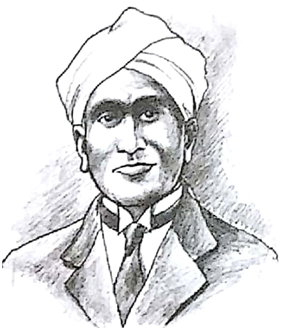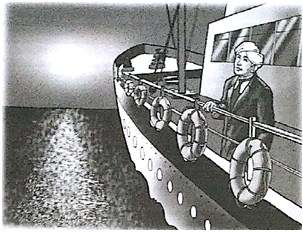

Unit -113
- The Raman Effect
- The Raman Effect - Long Answer Questions
- Vocabulary Building - Word Formation & The use of Prefixes and Suffixes
- Grammar - Articles
- Grammar-Prepositions with Parts of Speech Introduction
- Reading- Reading and Its Importance & Techniques for Effective Reading
- Basic Writing Skills : Sentence Structure - Use Of Phrases And Clauses In Sentences
- Importance of Proper Punctuation
- Techniques for Writing Precisely
- Paragraph Writing
- Multiple Choice Questions
- Grammar - Parts of Speech
- For Better Understanding - Parts of Speach
Unit -216
- Ancient Architecture In India
- Ancient Architecture In India- Long Answer Questions
- Vocabulary - Synonyms And Antonyms
- Homophones - Homonyms - Synonyms
- Grammar : Noun - Pronoun Agreement
- Grammar : Subject - Verb Agreement
- Errors Related to Noun Pronoun Agreement
- Reading : Improving Comprehension Skills
- Reading - Techniques for Good Comprehension
- Writing-Letter Writing-Formats
- Writing-Letter of Apology
- Writing-Letter of Complaint
- Writing-Enquiry Letter
- Writing-Requisition Letter
- Writing:Cover letter sample for a resume
- Writing-Email Cover Letter
Unit -314
- Blue Jeans
- Blue Jeans - Long Answer Questions
- Vocabulary - Prefixes and Suffixes From Foreign Languages
- Grammar - Misplaced Modifiers
- Grammar - Tenses
- Grammar - Past Tense and Future Tense
- Reading-Skimming-Scanning
- Writing - Nature and Style of Sensible Writing
- Writing : Defining
- writing : Describing objects,places and Events
- Reading-Sub Skills of Reading
- writing : classifying
- writing : Providing Examples or Evidence
- Multiple Choice Questions
Unit -410
- What Should You Be Eating?
- What Should You Be Eating? - Long Answer Questions
- Vocabulary:Standard Abbreviations in English
- Grammar - Redundancies and Cliches
- Grammar: Oral Communication
- Reading:Comprehension
- Reading-Extensive-Intensive
- Writing - Eassy Writing
- Writing:Precis Writing
- Multiple Choice Questions
Unit -510
- How A Chinese Billionaire Built Her Fortune
- How A Chinese Billionaire Built Her Fortune - Long Answer Questions
- Vocabulary-Technical Vocabulary and Their usage
- Grammar: Common Errors in English
- Reading: Reading Comprehension-Exercises for Practice
- Writing-Technical Report
- Writing-Structure of report
- Writing- Characteristics and Features of a Good Report
- Writing - Categories of Reports
- Multiple Choice Questions
copy11
- Reading-Extensive-Intensive
- Grammar-Conditions
- Grammar-Active and Passive-voice
- Grammar- Adjective and Degrees of Comparison
- Reading-Improving Reading Comprehension
- Reading-Text Structure
- Reading-Determine Meaning of Word
- Writing-Letter Writing
- Reading-Discourse Coherence-Sequence of Sentences
- Reading-Study Skills
- Grammar - Sequence Of Tenses In English Grammar
The Raman Effect
The Raman Effect
 In the year 1930, the most unexpected thing happened in the world of science. A young Indian researcher, Chandrasekhar Venkat Raman, won the Nobel Prize for Physics for his ground-breaking discovery of the phenomenon called the Raman Effect. Hailing from Tiruchirapalli in Tamil Nadu, Raman completed his early education in Presidency College, Chennai. Such was his interest in Physics (his father had been a Physics teacher), that despite clearing the Civil Service Competitive Exam and becoming the Deputy Accountant General in Calcutta, he still found the time to pursue scientific research at the Indian Association for the Cultivation of Sciences. In 1917, he finally gave up his administrative position to become a Professor of Physics at Calcutta University.
In the year 1930, the most unexpected thing happened in the world of science. A young Indian researcher, Chandrasekhar Venkat Raman, won the Nobel Prize for Physics for his ground-breaking discovery of the phenomenon called the Raman Effect. Hailing from Tiruchirapalli in Tamil Nadu, Raman completed his early education in Presidency College, Chennai. Such was his interest in Physics (his father had been a Physics teacher), that despite clearing the Civil Service Competitive Exam and becoming the Deputy Accountant General in Calcutta, he still found the time to pursue scientific research at the Indian Association for the Cultivation of Sciences. In 1917, he finally gave up his administrative position to become a Professor of Physics at Calcutta University.
In the year 1930, the most unexpected thing happened in the world of science. A young Indian researcher, Chandrasekhar Venkat Raman, won the Nobel Prize for Physics for his ground-breaking discovery of the phenomenon called the Raman Effect. Hailing from Tiruchirapalli in Tamil Nadu, Raman completed his early education in Presidency College, Chennai. Such was his interest in Physics (his father had been a Physics teacher), that despite clearing the Civil Service Competitive Exam and becoming the Deputy Accountant General in Calcutta, he still found the time to pursue scientific research at the Indian Association for the Cultivation of Sciences. In 1917, he finally gave up his administrative position to become a Professor of Physics at Calcutta University.
By the time he embarked on his first trip overseas to London as a delegate at the Universities' Congress in 1921, leading physicists of the time like J J Thomson and Lord Rutherford was already acquainted with Raman's significant study in the field of optics and acoustics. Raman had studied classical percussion instruments like the tabla and the mridangam, more specifically, the mathematical relationships that produced the pleasing effects of the sounds.
 It was during this particular sea voyage to London that he was struck by the 'blue colour of the Mediterranean Sea. Till that time, it was generally accepted that the blue colour of the sea was actually a reflection of the sky This was confirmed by the celebrated physicist Lord Rayleigh, who had proposed that the minute particles in the air scattered the blue wavelength from the Sun's white rays. However, Raman was not convinced by this explanation. He speculated that the blue colour of the sea could be caused by the scattering of sunlight by the water molecules. To verify his speculations, he used a polarised Nicol prism on a sample of seawater to show that light was indeed scattered by the water molecules — a phenomenon that he called molecular diffraction.
It was during this particular sea voyage to London that he was struck by the 'blue colour of the Mediterranean Sea. Till that time, it was generally accepted that the blue colour of the sea was actually a reflection of the sky This was confirmed by the celebrated physicist Lord Rayleigh, who had proposed that the minute particles in the air scattered the blue wavelength from the Sun's white rays. However, Raman was not convinced by this explanation. He speculated that the blue colour of the sea could be caused by the scattering of sunlight by the water molecules. To verify his speculations, he used a polarised Nicol prism on a sample of seawater to show that light was indeed scattered by the water molecules — a phenomenon that he called molecular diffraction.
On his return to India, he initiated research in three areas: the scattering, of light by liquids, the scattering of X-rays by liquids and the viscosity of liquids. Of these three, it was the work in the first area that fetched him the Nobel Prize. Over the next seven years, he along with his distinguished associates such as K R Ramanathan and K S Krishnan conducted and supervised many experiments along these lines. On the morning of 28 February 1928, Raman and his associates had irrefutable proof of the modified radiations observed in the scattering experiments due to molecular vibrations. The discovery was announced through the Associated Press on 29 February and 8 March. Raman sent a detailed note along with an explanation to Nature. It was with a sense of affirmation that he addressed the gathering at the South Indian Science Association on 16 March 1928, with the following words: 'I propose to speak to you this evening on a new kind of radiation or light emission from atoms and molecules.' By this time, the experiments were replicated and the findings were confirmed, thereby leading Raman to the inevitable Nobel Prize. Raman had achieved what he had claimed in 1924. At a meeting of the Royal Society of Fellows — he had announced that he would win the Nobel Prize in Physics in the next five years.
So, what essentially is the 'Raman Effect'? Raman discovered that when a light beam travels through a medium, it is deflected by the molecules in the medium. Very interestingly, a small part of the emerging light beam, after being deflected by the molecules, had a different wavelength and colour from the phenomenon, which initiated the study called Raman spectroscopy. Today, Raman spectroscopy finds a lot of applications in various areas such as the study of the molecular structure of compounds, handheld scanners for detecting drugs and explosives, the pharmaceutical industry and medical diagnostics.
Meanings:
Irrefutable: impossible to prove wrong
Ground-breaking: original and important; showing a new way of looking at things
Embarked: started
Q1 :
Q1. Why Raman was awarded the Nobel Prize?
Ans: Raman was awarded the Nobel Prize for Physics for his groundbreaking discovery of the phenomenon called the Raman effect.
Q2 :
Q2. According to Raman, why is the sea blue in colour?
Ans: Raman speculated that the blue colour of the sea could be caused by the scattering of sunlight by the water molecules.
Q3 :
Q3. Why did Raman give up his administrative position?
Ans: Raman finally gave up his administrative position to become a Professor of Physics at Calcutta University.
Q4 :
Q4. What did Raman claim in 1924?
Ans: Raman had claimed in 1924 at a meeting of the Royal Society of Fellows that-*he would win the Nobel Prize in physics in the next 5 years
Q5 :
Q5.List the three areas in which Raman initiated his research?
Ans: Raman initiated research in three areas:
a) the scattering of light by liquids
b) the scattering of X rays by liquids and
c) the viscosity of liquids
Q6 :
Q6. How did Raman verify his speculations?
Ans: Raman verified his speculations by using a polarized Nicol prism on a sample of sea water to show that light was Indeed scattered by the water molecules - a phenomenon that he called molecular diffraction.

0 Doubts's